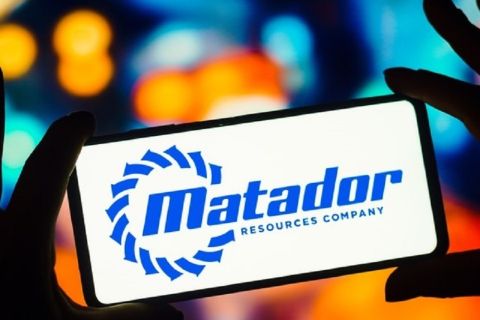
Chesapeake Energy Corp. (NYSE: CHK) continues to benefit by monetizing its various holdings as it recently announced its seventh joint venture (JV) from its unconventional gas and oil holdings.
The JV agreement provides an undisclosed international major with a 25% interest in its 650,000 Utica shale acres and follows similar agreements in the Haynesville, Fayetteville, Marcellus, Barnett, Eagle Ford, and Niobrara. Full details of the Utica JV will be disclosed upon completion of the agreement.
“In these seven JV areas, the company initially acquired approximately 5.1 million net leasehold acres at a cost of $11.1 billion…We then sold 1.5 million of those acres for a total consideration of $16.4 billion in cash and carries, meaning we recovered 150% of our total leasehold cost in all the plays combined,” Aubrey McClendon, chairman and chief executive of Chesapeake Energy, said during a conference call to discuss the company’s Q3 2011 earnings.
While some analysts and commentators have claimed that Chesapeake didn’t get as much as they desired in this particular JV, McClendon was emphatic that this agreement will allow the company to recoup its leasehold costs and will pay for the development of a play that he thinks will be the most profitable play in the U.S. in the future.
In addition to the seven already completed JVs, the company is also considering three more JVs to work on in 2012 in the Williston Basin, the Mississippi Lime, and an undisclosed oil play. As the company begins its development of the Utica’s oily phase, it is likely to pursue another JV in the play.
Although Chesapeake has acreage holdings in the Anadarko Basin, the Cleveland Tonkawa and Granite Wash, it doesn’t anticipate completing JV deals in these plays since they don’t need to be de-risked as drilling has already been ramped up.
The company will continue to focus on production from liquids-rich plays over the next five years, which will help to improve dry gas prices, according to McClendon. He noted that the company increased its natural gas production by 472% since 2000 while the rest of the industry increased its production by 12%. By focusing on increases in liquids production, Chesapeake’s dry gas production will remain flat for the next five years.
“Natural gas markets during the past five years were basically changed single-handedly by the efforts of one company…During the next five years it will be very different from now. The futures curve is currently pricing natural gas, we believe incorrectly, because the same company that helped bring you the gas oversupply is now dedicated to increasing its liquids production and its gas production will not increase much from here,” he said. Once natural gas demand begins to pick up, Chesapeake will return to growing its production to ensure that U.S. gas markets remain well supplied.
While gas production will remain flat until 2015, the company’s liquids production is expected to increase 50% between 2011 and 2015. By 2015, the company anticipates liquids production to reach an average of 250,000 barrels per day (b/d), which Chesapeake anticipates will increase earnings by 50% compared with 2011.
McClendon stated that the company is confident in not only this production growth, but the ability to gather and transport these volumes because of its vertical integration with its midstream segment.
“There are a lot of aspects to our business that are challenging and certainly building infrastructure in new play areas is one of those. But that is one advantage to the Chesapeake business model in that we are vertically integrated all the way from our service operations up to our midstream operations. There will be some delays, but we have built those in…You don’t see us miss our numbers and then blame unforeseen circumstances. We plan for those and take it in stride,” he said.
Once these systems are in place, they serve as a major boon for the company’s midstream MLP, Chesapeake Midstream Partners LP (NYSE: CHKM), in the form of dropdown acquisitions. In a separate conference call to discuss its Q3 2011 earnings, CHKM officials announced that they increased their projections for FY 2011 earnings by $8 million to $340 million.
Mike Stice, chief executive of CHKM, said that its gathering systems in the Haynesville and Barnett shales continue to perform strongly and the company is evaluating further dropdown opportunities from Chesapeake. “We will continue to benefit from the inventory, as the assets mature appropriately and are absorbed into our business model.”
He added that CHKM will focus on assets that increase its exposure to liquids-rich plays as well as diversify its holdings in various basins. This diversification could lead to the dropdown of assets in the Marcellus due to its maturation, according to Stice.
“We have a footprint already in the Mid-Continent in Oklahoma, which is relatively well positioned to some of the NGL-rich plays and the Granite and Colony Wash plays. But there are also opportunities there for expansion into the broader plays in Oklahoma that are NGL-rich as well as the NGL-rich component of the Marcellus,” he said.
These drop-downs will continue to occur once a year with the MLP largely staying away from third-party acquisitions aside from bolt-ons. “What we’re finding more often than not is that when other parties are buying into a basin, they’re paying quite a bit of premium for that. Frankly, we don’t need to pay and compete for that premium because of our relationship to Chesapeake,” Stice said.
Contact the author, Frank Nieto, at fnieto@hartenergy.com.
Recommended Reading
Petrie Partners: A Small Wonder
2024-02-01 - Petrie Partners may not be the biggest or flashiest investment bank on the block, but after over two decades, its executives have been around the block more than most.
Bobby Tudor on Capital Access and Oil, Gas Participation in the Energy Transition
2024-04-05 - Bobby Tudor, the founder and CEO of Artemis Energy Partners, says while public companies are generating cash, private equity firms in the upstream business are facing more difficulties raising new funds, in this Hart Energy Exclusive interview.
Matador Resources Announces Quarterly Cash Dividend
2024-04-18 - Matador Resources’ dividend is payable on June 7 to shareholders of record by May 17.
Matador Resources Declares Quarterly Dividend
2024-02-14 - Matador Resources will pay a $0.20 dividend on March 13 to shareholders of record by Feb. 23.
E&P Earnings Season Proves Up Stronger Efficiencies, Profits
2024-04-04 - The 2024 outlook for E&Ps largely surprises to the upside with conservative budgets and steady volumes.





